Genus LevisticumHill Higher classification Levisticum | Tribe Apieae Scientific name Levisticum officinale Rank Species | |
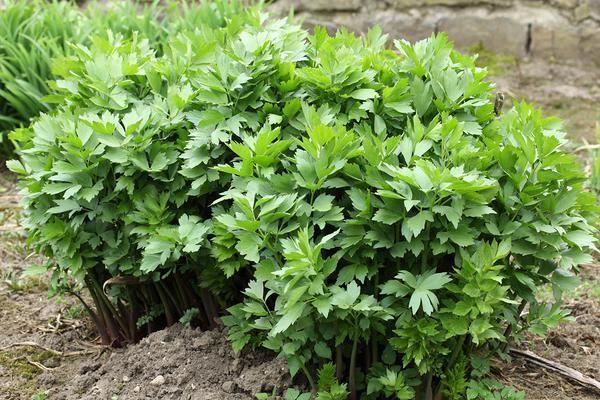 | ||
Similar Marjoram, Chervil, Tarragon, Summer savory, Lemon balm | ||
Lovage growing harvest and use millcreek herbs
Lovage (/ˈlʌvᵻdʒ/), Levisticum officinale, is a tall perennial plant, the sole species in the genus Levisticum in the family Apiaceae, subfamily Apioideae, tribe Apieae.
Contents
- Lovage growing harvest and use millcreek herbs
- Lovage 2 years from seedling to seeds
- Description
- Distribution
- Properties and uses
- Etymology
- References
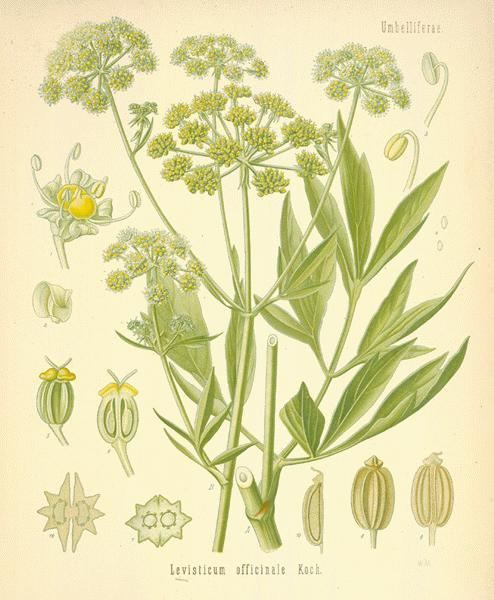
Lovage 2 years from seedling to seeds
Description
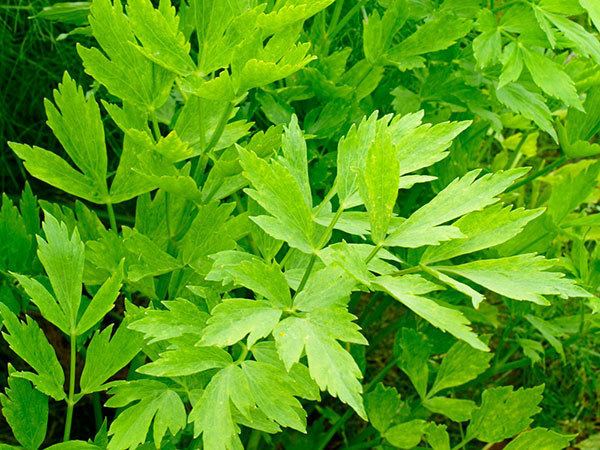
Lovage is an erect, herbaceous, perennial plant growing to 1.8–2.5 m (5.9–8.2 ft) tall, with a basal rosette of leaves and stems with further leaves, the flowers being produced in umbels at the top of the stems. The stems and leaves are shiny glabrous green to yellow-green and smell somewhat similar to celery when crushed. The larger basal leaves are up to 70 cm (28 in) long, tripinnate, with broad triangular to rhomboidal, acutely pointed leaflets with a few marginal teeth; the stem leaves are smaller, and less divided with few leaflets. The flowers are yellow to greenish-yellow, 2–3 mm (0.079–0.118 in) diameter, produced in globose umbels up to 10–15 cm (3.9–5.9 in) diameter; flowering is in late spring. The fruit is a dry two-parted schizocarp 4–7 mm (0.16–0.28 in) long, mature in autumn.
Distribution
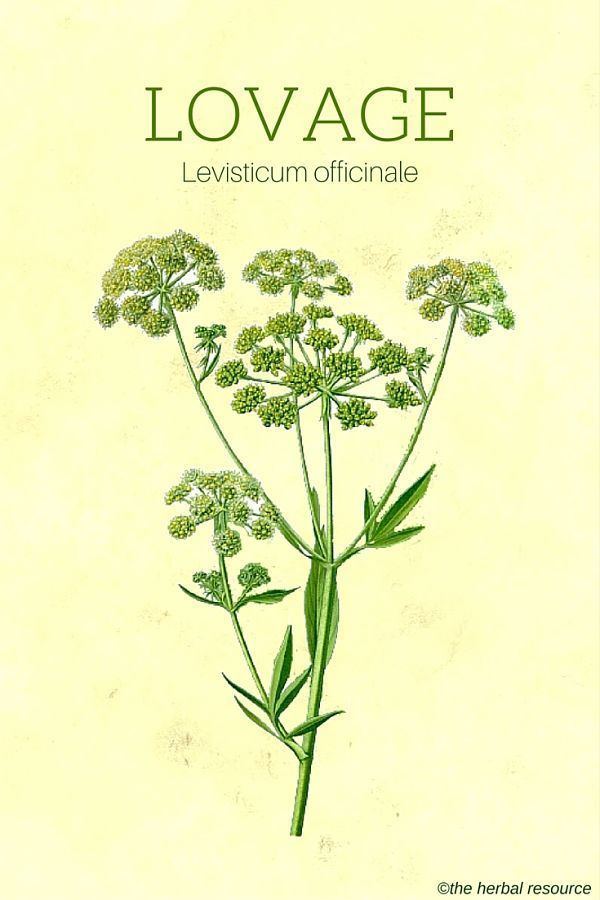
The exact native range is disputed; some sources cite it as native to much of Europe and southwestern Asia, others from only the eastern Mediterranean region in southeastern Europe and southwestern Asia, and yet others only to southwestern Asia in Iran and Afghanistan, citing European populations as naturalised. It has been long cultivated in Europe, the leaves being used as an herb, the roots as a vegetable, and the seeds as a spice, especially in southern European cuisine.
Properties and uses
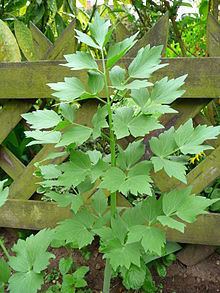
The leaves can be used in salads, or to make soup or season broths, and the roots can be eaten as a vegetable or grated for use in salads. Its flavor and smell is somewhat similar to celery. The seeds can be used as a spice, similar to fennel seeds. In the UK, an alcoholic lovage cordial is traditionally mixed with brandy in the ratio of 2:1 as a winter drink. In Romania, the leaves are the preferred seasoning for the various local broths, much more so than parsley or dill. In the Netherlands it is the only non salt ingredient of a traditional asparagus dish.
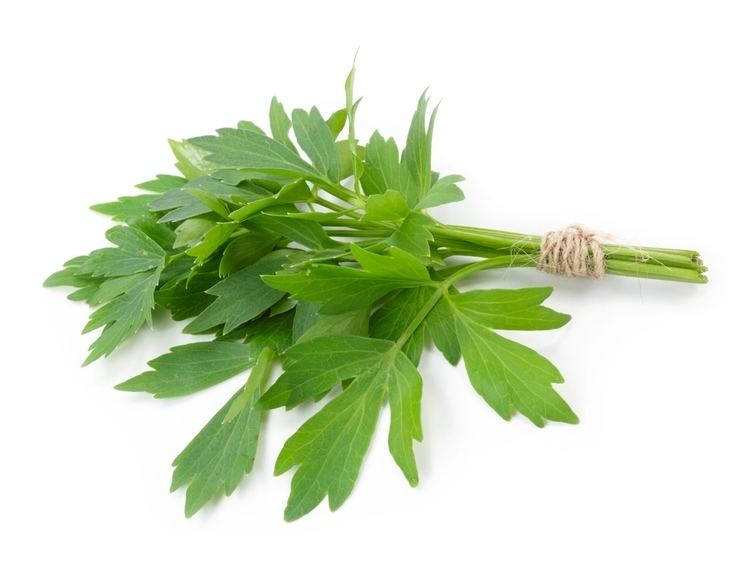
The roots, which contain a heavy, volatile oil, are used as a mild aquaretic. Lovage root contains furanocoumarins which can lead to photosensitivity. In Romania it is also used dried and with seeds to conserve and to add flavour to pickled cabbage and cucumbers.
Etymology
The name "lovage" is from "love-ache", ache being a medieval name for parsley; this is a folk-etymological corruption of the older French name levesche, from late Latin levisticum, in turn thought to be a corruption of the earlier Latin ligusticum, "of Liguria" (northwest Italy), where the herb was grown extensively. In modern botanical usage, both Latin forms are now used for different (but closely related) genera, with Levisticum for (culinary) lovage, and Ligusticum for Scots lovage, a similar species from northern Europe, and for related species. In Germany and the Netherlands, one of the common names of lovage is Maggikraut (German) or Maggiplant (Dutch) because the plant's taste is reminiscent of Maggi soup seasoning; however, the classic German name is Liebstöckel, . Italian levistico or sedano di monte, French livèche, Romanian leuştean, Hungarian lestyán, Russian любисток lyubeestok, etc. In Bulgaria, it is known as девесил deveseel. The Czech name is libeček, and the Polish name is lubczyk, both meaning "love herb". The name in Swedish is libbsticka, Norwegian løpstikke. The Croatian name for this plant is ljupčac or vegeta (named after Vegeta, a well-known Croatian meal seasoning similar to Maggi); the Finnish name is liperi or lipstikka, the former meaning "preacher's collar", because in old ages the plant was cultivated in monasteries or in rectories, while the latter is from Swedish, which is the second language spoken in Finland.
